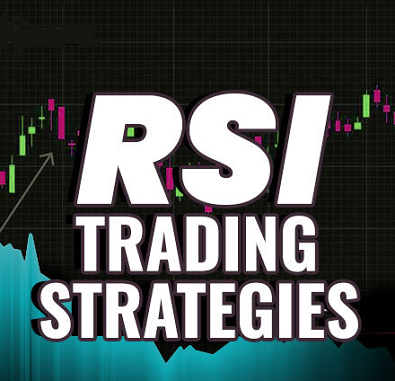
RSI Trading Strategies By Trend Spider
As a trader, it’s important to have a variety of strategies at your disposal to maximize your chances of success in the markets. One such strategy is the RSI trading strategy. By understanding how to use the RSI to inform your trading decisions, you can potentially improve your profitability and reduce your risk. In this article, we’ll take a closer look at the RSI trading strategy and explore how it can be applied in different market conditions.
What Is the RSI?
The RSI, or Relative Strength Index, is a popular momentum oscillator that was developed by J. Welles Wilder Jr. and introduced in his 1978 book, “New Concepts in Technical Trading Systems”. The RSI is used to measure the strength of a security’s price action over a given period of time.
On a chart, the RSI is typically displayed as a line graph that oscillates between 0 and 100. The line moves up and down as the asset’s price fluctuates, giving traders a visual representation of a security’s momentum.
Traders use the RSI to identify potential market trends and reversals by looking for overbought or oversold conditions, as well as bullish or bearish divergences. Overall, the RSI is a versatile and widely used technical analysis indicator that can provide valuable insights into a security’s momentum and help traders make informed trading decisions.
RSI Trading Strategies
There are several RSI trading strategies that traders can use to make trading decisions in the market. Here are some popular RSI trading strategies:
Overbought and Oversold Levels
When a security is overbought or oversold, it may present an opportunity for traders to make a profit by buying or selling the security, depending on the expected direction of the trend reversal.
RSI ranges from 0 to 100. While RSI readings above 70 and below 30 are most commonly used to identify overbought and oversold conditions respectively, other traders may use different thresholds based on their trading strategies and preferences. For example, many traders may use RSI readings above 80 and below 20 to define overbought and oversold conditions, while others may use readings above 60 and below 40.
When a security is overbought, it means that its price has risen too quickly and too high relative to its underlying value, which makes it more likely to experience a price correction or a price reversal in the near future. This may be a good time to sell the security, or at least avoid buying it. Traders may also use other indicators, such as bearish candlestick patterns or trendline breaks, to confirm the bearish signal and make a trading decision.
When a security is oversold, it means that its price has fallen too quickly and too low relative to its underlying value, which makes it more likely to experience a price rebound or a price reversal in the near future. This may be a good time to buy the security, or at least avoid selling it. Traders may also use other indicators, such as bullish candlestick patterns or trendline breaks, to confirm the bullish signal and make a trading decision.
Trading based on overbought and oversold signals alone may be risky, as the market can remain overbought or oversold for extended periods of time, and may not always experience a trend reversal as expected.
RSI Divergence
RSI is perhaps the single most popular indicator for identifying divergences. Divergence is a trading concept that occurs when the price of a security diverges from the direction of an indicator. In the case of RSI divergence, there are four types: bullish and bearish divergence as well as hidden bullish and bearish divergence.
A bullish divergence occurs when the price is making lower lows, but the RSI is making higher lows. This indicates that the momentum of the downtrend is weakening and a trend reversal to the upside may be imminent.
A bearish divergence occurs when the price is making higher highs, but the RSI is making lower highs. This indicates that the momentum of the uptrend is weakening and a trend reversal to the downside may be imminent.
A hidden bullish divergence occurs when the price is making higher lows, but the RSI is making lower lows. This indicates that the underlying bullish momentum is still strong, despite a short-term pullback in price.
A hidden bearish divergence occurs when the price is making lower highs, but the RSI is making higher highs. This indicates that the underlying bearish momentum is still strong, despite a short-term bounce in price.
Divergence signals can be confirmed with additional analysis, such as chart patterns, volume analysis, or fundamental analysis. However, traders should be cautious when using RSI divergence as a trading signal, as false signals can occur and additional confirmation is recommended before entering a trade.
RSI Swing Rejections
RSI swing rejections refer to a trading strategy in which traders look for swing highs and lows on the RSI indicator. A swing high occurs when the RSI reaches a high point and then moves lower, while a swing low occurs when the RSI reaches a low point and then moves higher.
When a swing high is formed, traders look for the RSI to reject the high by moving lower.
Conversely, when a swing low is formed, traders look for the RSI to reject the low by moving higher.
These rejections can indicate that the market is losing momentum in the current direction and may be about to reverse. Traders can then use this information to enter trades in the opposite direction of the previous trend, with the aim of profiting from the anticipated reversal.
RSI Pros and Cons
Here are some of the pros and cons of using the RSI in trading:
Pros:
Provides a quick and easy way to identify overbought and oversold conditions: The RSI is a simple and straightforward tool that can quickly identify overbought and oversold conditions, which can be useful in making trading decisions.
Can be used on any time frame: The RSI can be used on any time frame, from intraday trading to long-term investing, making it a versatile tool for traders.
Works well with other technical indicators: The RSI can be used in conjunction with other technical indicators, such as moving averages and trendlines, to confirm signals and make trading decisions.
Can help identify divergence: The RSI can also help identify bullish or bearish divergence, which can be a useful signal for identifying trend reversals.
Cons:
May provide false signals: Like any technical analysis tool, the RSI can provide false signals, especially in volatile markets or during periods of low liquidity.
Not a standalone tool: The RSI should not be used as a standalone tool, and traders should always use additional analysis and risk management techniques to make informed trading decisions.
Can lag behind price action: The RSI is a lagging indicator, which means it may not always provide timely signals when the price is changing rapidly.
May not work well in trending markets: The RSI may not work well in trending markets, as it can provide signals that are opposite to the overall trend.
The RSI is a useful tool in technical analysis that can provide valuable information for traders. However, like any tool, it has its limitations and should be used in conjunction with other analysis techniques.
The Bottom Line
In conclusion, the Relative Strength Index (RSI) is a popular technical analysis tool used by traders to measure the strength of a security’s price action and identify overbought or oversold conditions. Overall, the RSI is a valuable tool for traders, but it should not be relied upon as a standalone indicator. By using the RSI in combination with other analysis techniques, traders can increase their chances of making successful trades and minimizing potential losses.

